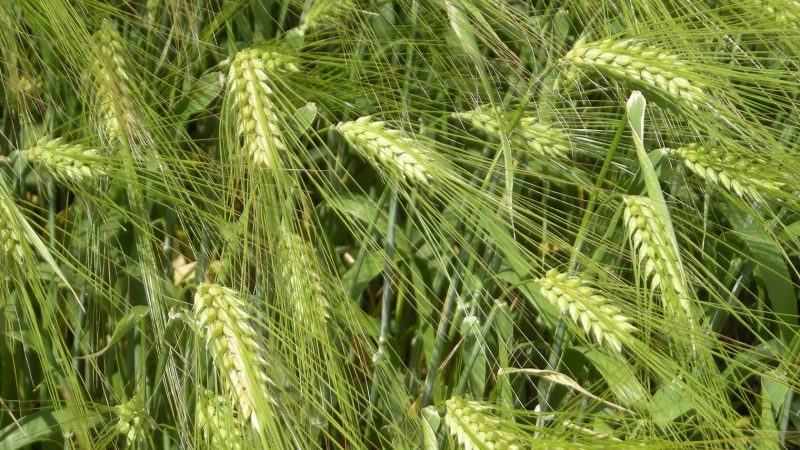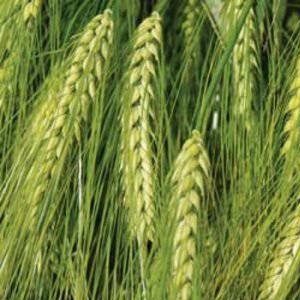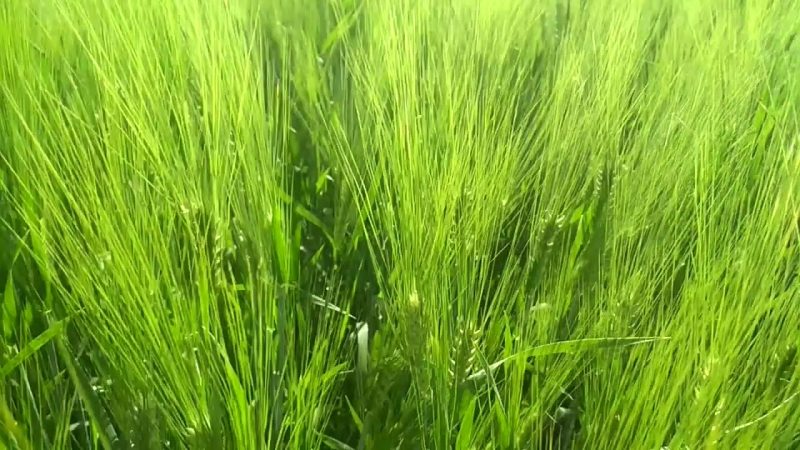Characteristics and description of the Vakula barley variety
High yielding barley Vakula occupies a large number of farmland in Russia and Ukraine. Its popularity is due to its high productive tillering in comparison with other varieties of spring barley. This allows you to significantly save on seed and reduce the total cost of production, increasing the profit of the agricultural company.
The content of the article
Barley Vakula: variety description
The Vakula variety is called one of the most productive under equal conditions. cultivation compared to other spring crops varieties... The excellent yield indicators are explained by the biological characteristics of the barley.
Characteristics and botanical description

Spring barley Vakula belongs to the pallidum variety. The bush is erect, leafless, intermediate, green. The average height is 70-80 cm.
The spike is 6-row, of medium length - 7-9 cm, loose - 10-11 segments per 4 cm of the spike. The ear is rectangular-rhombic, unbreakable. The color of a mature spike is straw yellow. Awns are long - 14-18 cm, slightly diverging, slightly serrated, yellow. Easy to remove during threshing.
Spikelet scales are thin, without pubescence, narrow, the transition to awn is gradual. The grain is large, oblong-oval, light yellow, leveled. The mass of 1000 grains is 46-52 g, in conditions of abundant moisture supply and on irrigation it reaches 60 g.
Distinctive features
The Vakula variety was bred by Odessa breeders. It belongs to mid-season varieties with a growing season of 85-88 days. The seeds show excellent germination at a temperature of + 1 ... + 15 ° С.
Seedlings tolerate sudden spring frosts and long dry periods well.
Attention! In conditions of prolonged summer heat, spring barley of the Vakula variety forms grain of poor quality. A delay in sowing for 7-10 days from the possible early dates of spring planting significantly reduces yield indicators.
Variety productivity

Seeds of spring barley Vakula at a low seeding rate of 2 million / ha give a yield of up to 90 c / ha (the weight rate of seeding with a weight of 1000 grains of 40 g is 160-180 kg / ha). Under conditions of intensive farming, the bush easily forms up to 10-12 full-fledged stems.
On a note! To obtain the highest yield of high-quality grain, it is recommended to use original planting material adapted to local climatic conditions.
Advantages and disadvantages
Vakula variety belongs to the highest-yielding varieties in Ukraine with a lot of positive qualities. Over the years of testing, the average yield per hectare was 50 centners, the maximum indicators reach 92-95 centners / ha.
Undeniable advantages of the variety:
- lodging resistance;
- resistance to smut diseases;
- ecological plasticity;
- wide range of applications.
Among the disadvantages is the need for a high agricultural background and regular fractional application of complex mineral fertilizers.
Growing regions
The wide distribution of the Vakula variety is facilitated by its ecological plasticity. The variety has been zoned in the Middle Volga, Central Black Earth, North Caucasus regions, throughout Ukraine.
All cultivation areas have different characteristics in terms of fertility, total rainfall and average annual temperature.
Growing features
Cultivation of spring barley are engaged in most regions of Russia. This valuable grain crop is used to produce croup, compound feed, beer... In conditions of strict adherence to the cultivation technology, a high yield is obtained.

Recommendations for the cultivation of the Vakula variety
The main task of pre-sowing soil treatment for spring barley is to loosen the surface layer of the soil and create a compacted bed for seeds to the seeding depth. Preparation is started as early as possible so that the spring moisture in the soil is well preserved.
The recommended sowing method is an ordinary unit of 2-3 seeders powered by a caterpillar tractor. Wheeled tractors intensively compact the soil during early spring sowing on wet soil, which is unacceptable when growing grain. Seeds are planted to a depth of 4-5 cm in wet soil and 7-8 cm in dry soil.
Important! The most important condition for growing spring barley is crop rotation. Barley is sown after potatoes, beets, and corn. After other grains, sowing barley is strictly prohibited.
The first activities for the care of crops are carried out immediately on the day of planting. The field is carefully rolled with ring-spur rollers. When an economically dangerous amount of weeds appears, they are treated with herbicides. Recommended for use amine salt 2,4-D, "Lontrel", "Dialen".

Spring barley needs nutrients, especially phosphorus and calcium. Good results are obtained by pre-sowing fertilization based on:
- 20-30 kg / ha phosphorus;
- 30-45 kg / ha nitrogen.
Organic fertilizers are rarely applied for sowing barley. After applying manure, the fields are carefully plowed up. The optimal dose is 20-25 t / ha from autumn for autumn plowing (autumn digging of soil).
Spring barley is harvested at a grain moisture content of about 16% to avoid unnecessary damage and loss due to drooping ears. Harvesting of spring barley is carried out promptly, by direct combining, since ears dry in the rolls become brittle and lose a significant part of the grain during threshing.
Attention! A delay in harvesting by 4-5 days leads to a breaking off of an ear and a complete loss of harvest during mechanized harvesting.
Pests, diseases, climatic factors
Varietal barley Vakula is resistant to diseases such as powdery mildew, striped helminthosporiosis, dwarf rust. Resistant to lodging.
When signs of disease with powdery mildew, rust, root rot appear on the plants of spring barley, the crops are treated with fungicides: "Amistar Extra", "Impact", "Derozal".
On a note! Like any spring variety of barley, Vakula does not tolerate intense dry periods at the time of mass germination of seeds.
Farmers reviews

Most farmers speak positively about the Vakula barley variety, but note some peculiarities.
Mikhail, Nizhny Novgorod: «I've been growing Vakula barley since 2015, I'm very pleased with the performance. On my own I recommend to carry out high-quality pre-sowing treatment of the field, surface plowing will not work. The highest yield - 85 c / ha - was obtained in a year with heavy snowfalls and spring rains. "
Sergey Petrovich, Zlatoust: “I plant Vakula barley in small quantities for my own brewery. The variety is excellent, the grain is perfect, the same, complete, the protein content is up to 12%. It grows well, emerges quickly, never noticed an infection or abundant lodging of an ear in the field. I recommend it for brewers. "
Ivan Yurievich, Abinsk: “Vakula is growing with varying degrees of success. In dry years, it gives a crop of dubious quality, if you are late with sowing by only 5-7 days. Needs moisture in the spring. From the merits - it is never amazed by the usual diseases of cereals. "
Conclusion
Vakula barley is resistant to diseases and shows high yields when grown in different climatic conditions. To obtain a good harvest, it is important to strictly observe the technology of growing spring crops. High quality grain is obtained in large quantities at the appropriate cost and painstaking work.